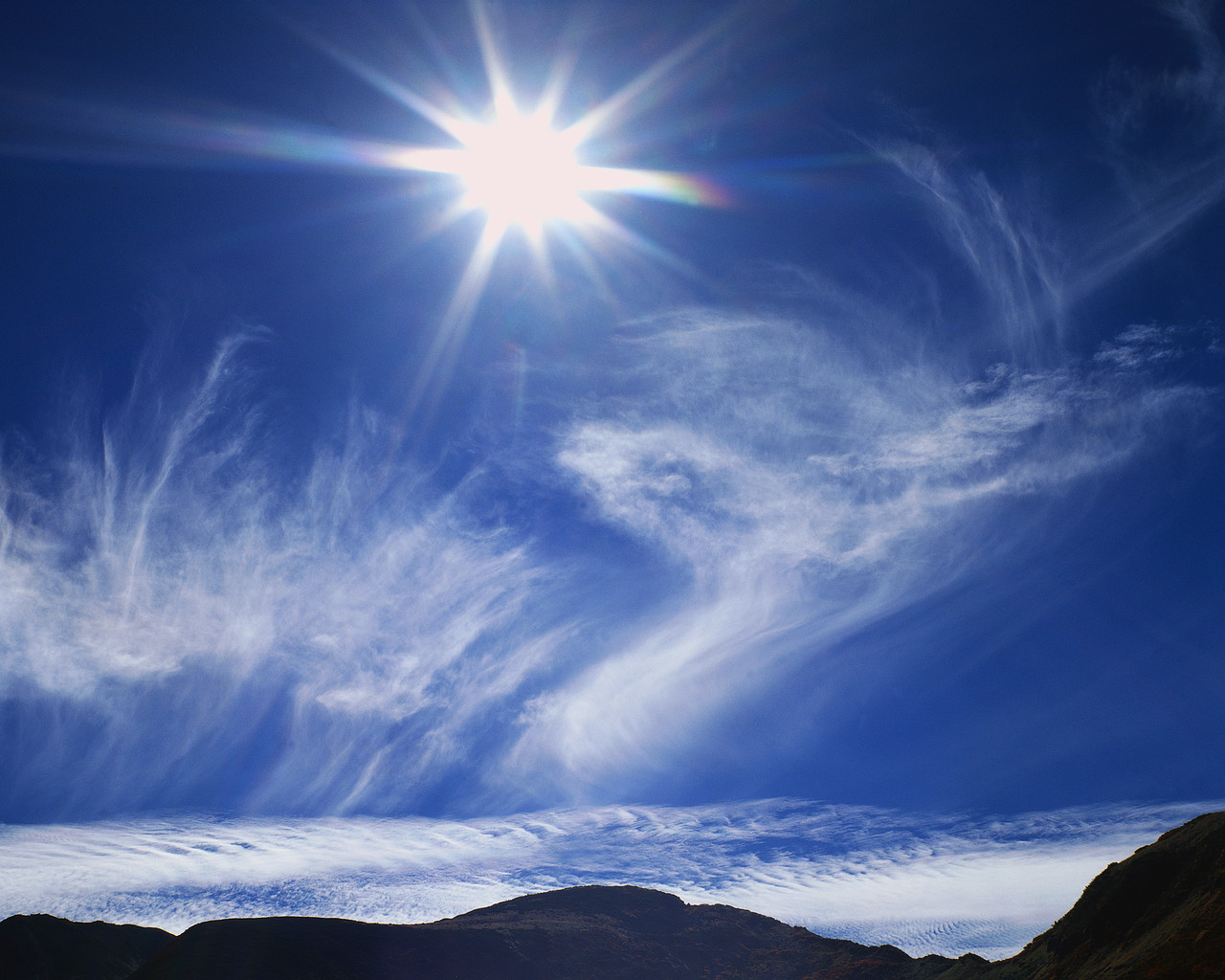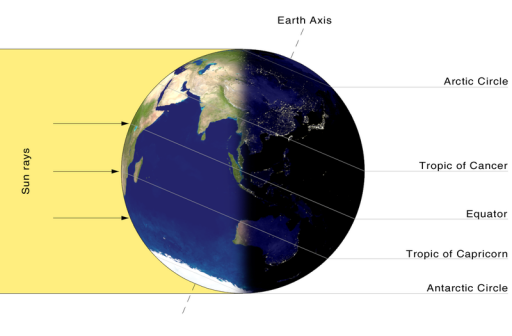Northern hemisphere entering the solar winter

The Northern Hemisphere is entering the quarter of the year with the least amount of daylight, known as solar winter.
As the Northern Hemisphere is tilted away from the direct rays of the sun, over 50 percent of the hemisphere is in darkness at any one time. Colder air during the winter months is a direct link to the smaller amount of daylight. Solar winter also marks the beginning of the second half of autumn in the North. This is the time of the year that is linked to bigger storms organizing across the country as stronger cold waves ripple southward. Strong cold fronts that sweep into the Gulf of Mexico and off of the East Coast usher in much-cooler and drier air into tropical breeding grounds. This helps diminish the risk for tropical development in the Gulf and Atlantic. (AccuWeather)

The amount of radiation received by the Earth and different latitudes is a product of the angle of the Sun. When the Sun is directly overhead more radiation is received at the Earth’s surface than when it is close to the horizon. Because of the axial tilt of the Earth, the angle of incidence of the Sun at a particular latitude changes along the Earth’s orbit. Solar winter is the name given to the three months when a particular hemisphere receives the least amount of solar energy.
Before the rays of the Sun can strike the Earth they must pass through the atmosphere. If the rays travel through the atmosphere directly i.e. the Sun is at meridian, then relatively little of the rays are absorbed or reflected back into space. This is why the equator is generally hotter than the poles – because the Sun is more often overhead. At the poles, the rays travel through the atmosphere at an angle and therefore have to travel through far more of it – meaning that more radiation is absorbed or reflected back.
Similarly at the surface, the angle of the Sun affects how much energy is distributed over a certain area. If the rays are striking the surface head on then a maximum amount of energy is concentrated on a minimum amount of space and so the concentration of the rays is greater. However, if the ground is at an angle to the Sun the same amount of rays will strike over a greater area, reducing the concentration and thus the amount of heat absorbed.
The Earth rotates as it orbits the Sun, and so different patches of ground receive solar radiation at different levels at different time. However, equatorial regions will on average receive more radiation than the poles for the reasons described above. The Earth is also tilted at an angle of 23.44 degrees, meaning that different hemispheres receive different distributions of heated. When the northern hemisphere is tilted towards the Sun, it receives more radiation than the southern hemisphere; when the southern hemisphere is tilted towards the sun it receives more than the north.
As the Earth goes round its orbit, the hemisphere that is tilted towards the Sun changes – this gives rise to the seasons. The 3 months when the northern hemisphere is tilted most away from the sun, and thus receives the least amount of energy, are known as solar winter for the northern hemisphere. Solar summer in the southern hemisphere occurs at the same time. When solar summer occurs in the north (when the northern hemisphere is tilted towards the Sun) solar winter occurs in the south.
Solar seasons do not entirely match up with the observed temperature changes on Earth. In the northern hemisphere solar winter begins around 1 November and ends around 1 February. However, while the winter solstice (middle of solar winter) occurs in December, the coldest temperatures are often found in January and February. This is because of the lag effect of heat – heat from the summer and autumn takes time to dissipate in the winter, just as it takes time to build up in the summer. So while the lowest amounts of solar radiation are found on the winter solstice, the coldest temperatures and worst weather generally occur towards the end of solar winter. (Helium)


Commenting rules and guidelines
We value the thoughts and opinions of our readers and welcome healthy discussions on our website. In order to maintain a respectful and positive community, we ask that all commenters follow these rules:
We reserve the right to remove any comments that violate these rules. By commenting on our website, you agree to abide by these guidelines. Thank you for helping to create a positive and welcoming environment for all.